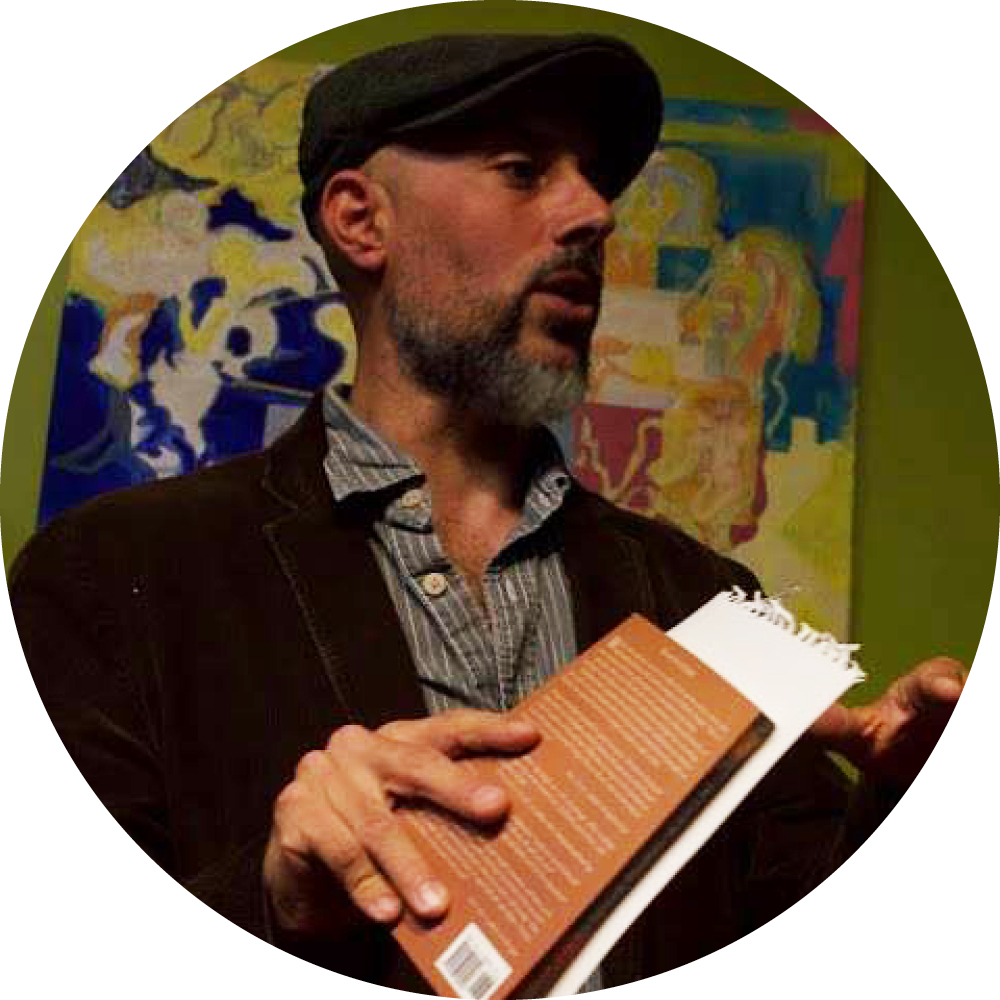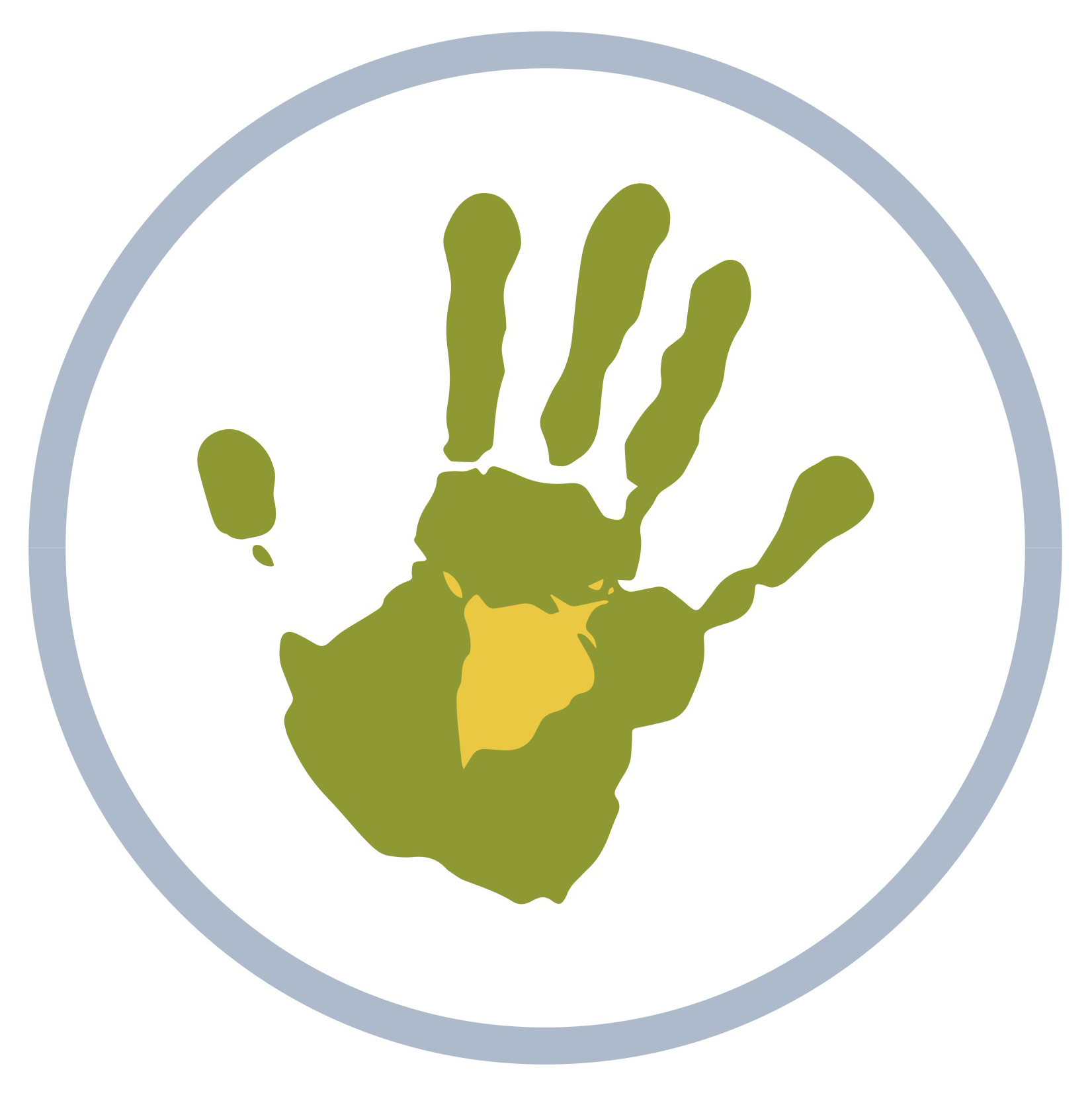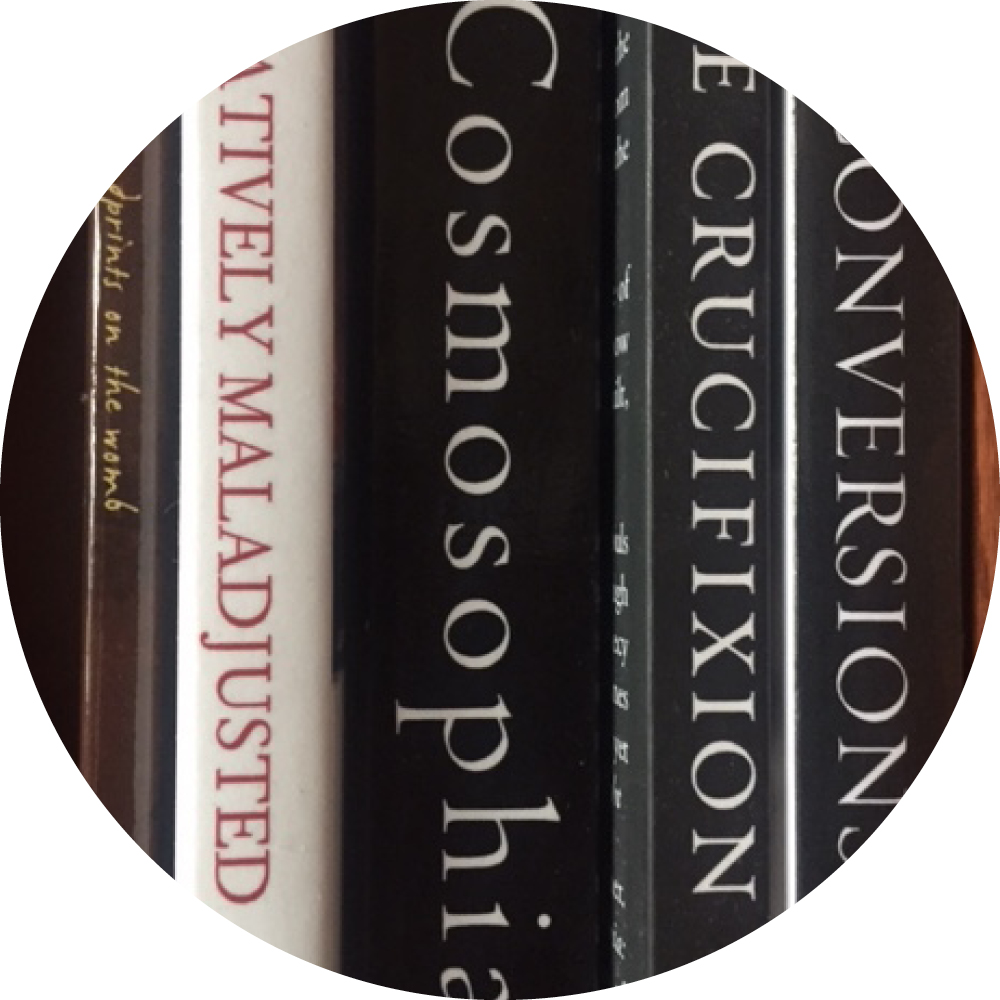On Vistas, Voles, and Volition
By Katherine Hauswirth
I am typing these words with some pain. Yesterday on the Schoodic Head Trail, my body, propelled by an overly ambitious backpack, kept going forward while my left foot stayed behind, held hostage by a vicious root. I fell hard, instinctively breaking the fall with my left hand – the dominant one. After a quick check of my parts I offered a silent prayer of thanks that I hadn’t done more damage, since I was hiking alone. I had to baby that aching hand for the rest of the hike.
On the trails I chose to walk on my first full day at Acadia National Park, I needed my hands. There was a fair amount of climbing up and down stony areas, and the slick spots left by the misty morning meant that I needed to grab hold of whatever might pull me up or ease me down – often a nearby tree limb, or the right-sized crevice in a rock face.
After the fall, I was extra careful. But when my feet started to give way on some loose, wet scree, going downhill, I hastily reached for the small tree to my left and it STABBED me! My reflexive grip encircled the broken-off point of a twig with some force, and again my left hand was hurting (and this time bleeding, too).
My eyes stung, and I was indignant. In my instant of pain I felt like Nature was making me pay for the panoramic view at the apex of the Anvil Trail, and for the plethora of photos I snapped of the moonlike terrain on the crest, the intricate mosses in every shade of green, and the soft, pleasing corridors that ran between so many fine displays of foliage and bark.
The painful moments had been foreshadowed. My blog entry had been about the experience of vexation in Nature. Besides ticks, mosquitos, sweaty humid days, and blisters, I wrote about the roots that we trip over. Had Nature read my blog? Was she seeking revenge for my tactless narrative?
I am a faithful follower of Edwin Way Teale’s almanac, A Walk Through the Year (1978). Like many nature writers, Teale often lauded the gifts to be found in the world outside. But he was too respectful of Nature to graft his own emotions onto her, to portray her as an entity that takes us into consideration. In his June 7 entry he noted:
“An apple falls from a tree and lands in the grass. It crushes an ant and misses another ant…The dead ant was not the target of the fall…All the ants in the world, all the hawks and rabbits and men and wild flowers, exist in the same natural laws.
They are surrounded by the impartiality of Nature.”
I have a hard time viewing Nature that way sometimes. I mused that if Nature had read my blog to the end, she would have learned that despite the ticks and mosquitoes and vindictive-seeming tree roots, I have an enduring love for her. I don’t always understand why things must be the way they must, especially when there is pain involved. But devotion means accepting the difficult along with the sweet. Later in the same entry, Teale offered some words in this vein:
“The red fang and the bloody claw are as much a part of Nature as the drifting cloud, the rainbow, and bird song. To ignore this fact is to distort the truth…There are both the terror and the pain and the brightness and the beauty in Nature…Nature is not gentle but there are warm and gentle breezes. For even the most timid and hunted of creatures, there are moments of
peace and natural pleasure.”
The brightness and the beauty are what keep me coming back to the well, and they are so readily apparent here at Acadia. I hear the surf crashing the moment I open the door. The simple act of driving down the main Schoodic Peninsula road is an unfolding of sparkling water, boulder-strewn expanses, infinite greys and greens and browns punctuated by the flight of birds and all manner of plants waving in the wind. It’s been overwhelming – I generally take my beauty in smaller doses. But here, I could fall on my knees before it, completely lost for words. This would be a problem, since I am the current writer in residence here. My job is to say something.
Early this morning, before the end of the condo complex’s designated quiet time, I did my best to silently lug a heavy kitchen chair out onto my little balcony so I could watch the day brighten, sip my coffee, and have breakfast with Mary Oliver’s words. Two things about her poems struck me this time around: joy and specificity. The joy she shares, so palpably genuine, is often about contact with a highly unique moment or being – not a grand vista. In her collection Why I Wake Early, one whole, deliciously detailed poem is about bringing home a whelk’s egg case – “this yellow-white lace-mass… a little like popcorn stuck to itself – or a ball of prized lace-strings rolled up tight.” She goes on:
…one more
sweet-as-honey riddle for the wanderer
whose tongue is agile, whose mind
in the world’s riotous plenty,
wants syntax, connections, lists,
and most of all names to set beside the multitudinous
stars, flowers, sea creatures, rocks, trees…
When I read these lines I thought, “this is exactly how I felt about that patch of lichens I found yesterday!” I wanted to name them, to know their specific story, catalogue them within my intellectual and emotional collection, later pull them back out of my mental filing system for further consideration. Another poem in Oliver’s collection is about a swimming snake, and yet another about rows of beans. I recognize her delight in these intimate, finely etched encounters framed by the broader brushstrokes of the wider landscape. I have been graced with many such small yet indelible moments.
When I climbed a particularly high rock pile yesterday, still favoring my freshly punctured hand, a Black-Capped Chickadee was waiting for me in the shaded, pine-needle strewn alcove into which I emerged. Well, of course he probably wasn’t waiting for me. He just happened to be there, and for some reason my by-then lurching gait and drizzle-matted hair didn’t scare him off. He continued to hop around, consumed with his Chickadee mission for the day, unperturbed by my greeting. I relished the contentedness and connectedness this simple bird (Maine’s state bird!) brought me for a moment, simply by sharing my space.
I had another moment like this back at home, in a much more ordinary setting. Our dead-end street in Connecticut abuts a lonely stretch marked by three overpasses. At the close of the day, this salvo of concrete bridges is sometimes the extent of our dog Buddy’s walk. Enough to stretch his legs and empty his bladder, and of course, to sniff. Buddy’s beagle/basset hound nose doesn’t need a photo-worthy vista to be fully engaged.
One evening, while Buddy sniffed and snorted in the long grasses, I focused on a small, dark ball that moved repetitively as we drew closer. We’d come upon a vole happily munching on a leaf in the shadow of the curb, and for several long moments he was unaware of our presence. I stooped close to snap a picture, and he didn’t even notice me looming over him, consumed as he was with consuming his dinner.
On impulse, I shattered this poor vole’s reverie by reaching my index finger down and very gently touching the soft fur on his back. He was even downier than he looked – I still remember how light and warm he felt. However, my finger caused the vole to begin running around frantically, veering toward the center of the road, and after repeated efforts I was able to chase him up over the curb, away from the path of deadly cars.
The impulse to touch the vole was a familiar one, one that I had managed to overcome on many other occasions when I stumbled on some small creature absorbed in its daily work. Even as I reached out, I knew that the vole’s evening would be infinitely more peaceful if he didn’t have to relive the trauma wrought by a giant, surprise hand. But I indulged my hunger for physical contact, prioritizing it over the vole’s peace of mind and possibly his sanity.
As Teale said, the force of Nature is an impartial one. But neither I nor the vole was impartial in these moments. I was invested in watching, touching, and then in trying to save him. He was wholly invested in his leaf, and then in getting away from me.
There’s something we individuals have that Nature doesn’t. Although we are, on the one hand, part of the natural order, we are also – unlike storm clouds or falling apples – beings with the ability to think, and to choose. On the way back from Acadia’s Mount Desert Island, I found The Natural World of Louise Dickinson Rich (1962), mostly about Maine, in a used bookstore, and her words spoke to me about the initially daunting beauty of Acadia, and also about we creatures’ privilege of making choices: “The sea is very big and it makes me feel very small. But I can do something it can’t do. While it is mindlessly chasing the moon around the globe, I’m making up my own mind where I’ll go and when and why.”
So, I made some choices. I chose to forgive those rough peaks for their sometimes hostile-seeming ruggedness, and even for the bruises that came later, because on balance my hikes gathered a wealth of gifts into a short morning. And of course, I had been the one to decide on the hikes. Today, I chose to put less weight in my pack, in the hopes that I’ll be more agile for my new adventures.
Back at home, I had chosen to touch the vole, and I am still regretting how I obeyed that impulse. Sitting here at the dining room table in my temporary Acadia apartment, my achy muscles soothed by Advil, I chose to drift away from the dramatic gulfside surf and the splendor of geologic tumbles and research voles for a while.
I found a study in the journal Nature that described how voles spent extra time grooming companions who were stressed out. At the mercy of scientific inquiry, the unlucky, stressed-out voles had been subjected to noises and mild electric shocks. The voles offering care for their anxiety-ridden fellows had not witnessed the stressful stimuli, so it seems there was some vole conversation going on. Hormone measurements suggest that they are capable of empathizing with each other.
Did the vole I touched go home and get some extra caresses from his family or friends after we parted ways? I’ll never know, of course, but I like to think about how I got a glimpse into his usually secret life that afternoon. I still regret the intrusiveness of my pointer finger, and regret even more learning about some unfortunate voles’ traumatic moments in a laboratory, but I like to think about voles comforting one another somewhere below the packed dirt lining Bridge Street, and here at Acadia, too.
My Acadia field guide tells me that voles are abundant here. The Southern red-backed variety favors moist, dark spruce forests and the meadow voles prefer meadows (obviously), as well as marshes and other, smaller waterways. The author adds that “these fat mouse-like little animals are so secretive and blend so well with their surroundings that hikers only rarely see them.” If I am so lucky as to come upon a vole again, whether near the pristine paths of Acadia or in the curbside sand back home, I’ll remember that the privilege is a rare one and will order my eager hand to stay in its pocket.
I’ll likely also remember the mild trauma wrought by my first, damp hikes here at Acadia, and Nature’s indifference to my plight. My human part in these dramas was to choose the best path, and if I failed that, to choose a better one the next time. Nature will remain impartial, but she will also remain an unfailing teacher who can be accessed just about anywhere.
It’s funny how coming to a revered, often larger-than-life national park brought me closer to the more mundane representations of Nature that present themselves during walks around my faded asphalt neighborhood at home. Of course, any naturalist worth her salt would point out that this isn’t odd at all: the web of life is laced with far-reaching strands.
If I didn’t know better, I’d think that Nature had planned these unfoldings with just my benefit in mind.
About The Author
Katherine Hauswirth
Katherine Hauswirth’s writing often centers on themes of nature and contemplation. Her blog, First Person Naturalist, is a reflection on experiencing and learning about nature in Connecticut. She has been published in forums including The Christian Science Monitor, Orion online, Postconsumers, Pilgrimage, Whole Life Times, The Wayfarer, Connecticut Woodlands, Wilderness House Literary Review, Chronogram, and Seasons. She was awarded a Wesleyan Writers Conference scholarship based on her nature writing in 2014. In 2015, she was awarded the honor of Artist-in-Residence at the Edwin Way Teale memorial sanctuary in Connecticut. She was an Artist-in-Residence at Acadia National Park in 2017 and won first-prize for her nature writing (memoir-vignette category) in the Soul-Making Keats Literary Competition that same year. Her book with Homebound Publications, The Book of Noticing: Collections and Connections on the Trail, launched last spring and received Honorable Mention for General Nonfiction in the 2018 American Society of Journalists and Authors contest.
Re-sources
Re-Imagining Education

Empowering educators to take a deeper look at the stories told in our schools and to re-imagine them in transformative and
nurturing learning spaces.
Learning Opportunities

Classes, workshops, and lectures that help to empower people to re-imagine who they are and their place in the world.
CWP

The Chicago Wisdom Project offers a alternative to the industrial and corporate models of education that have become increasingly prevalent in the American educational landscape.

